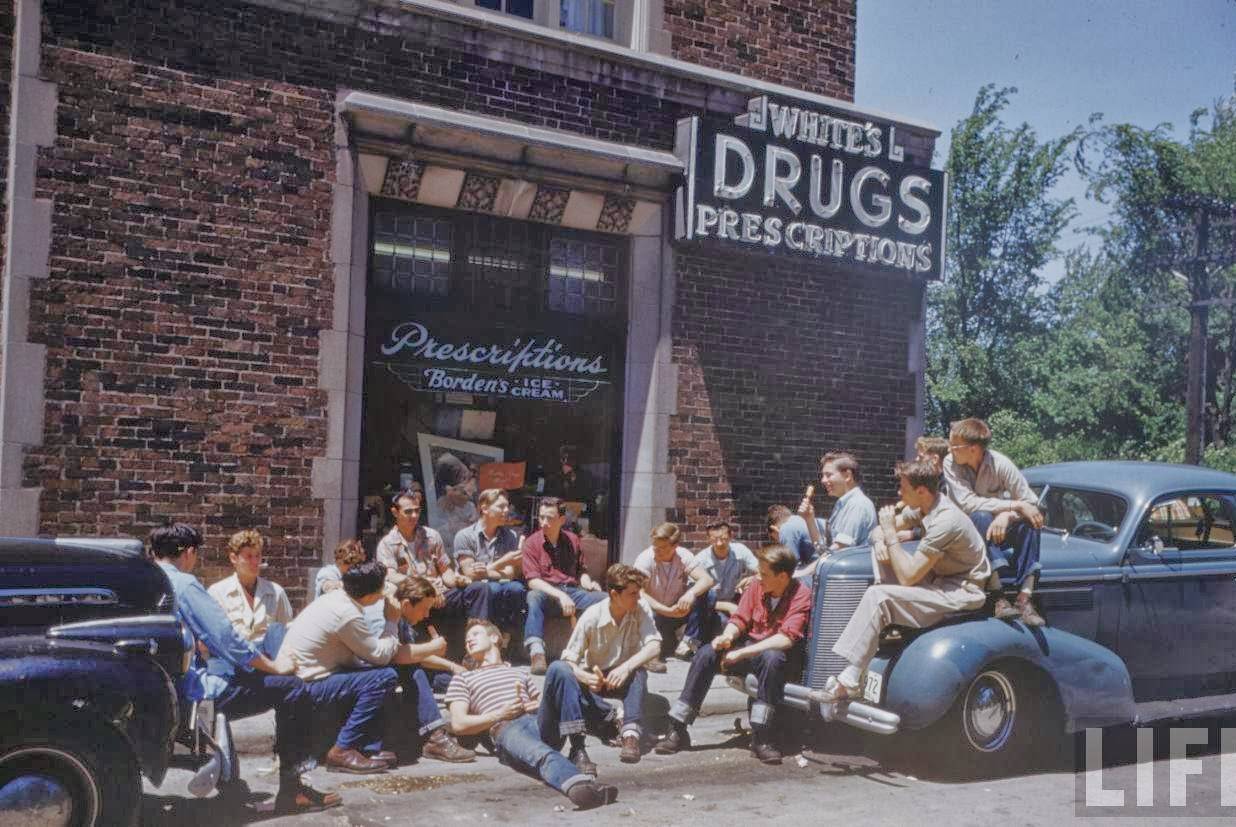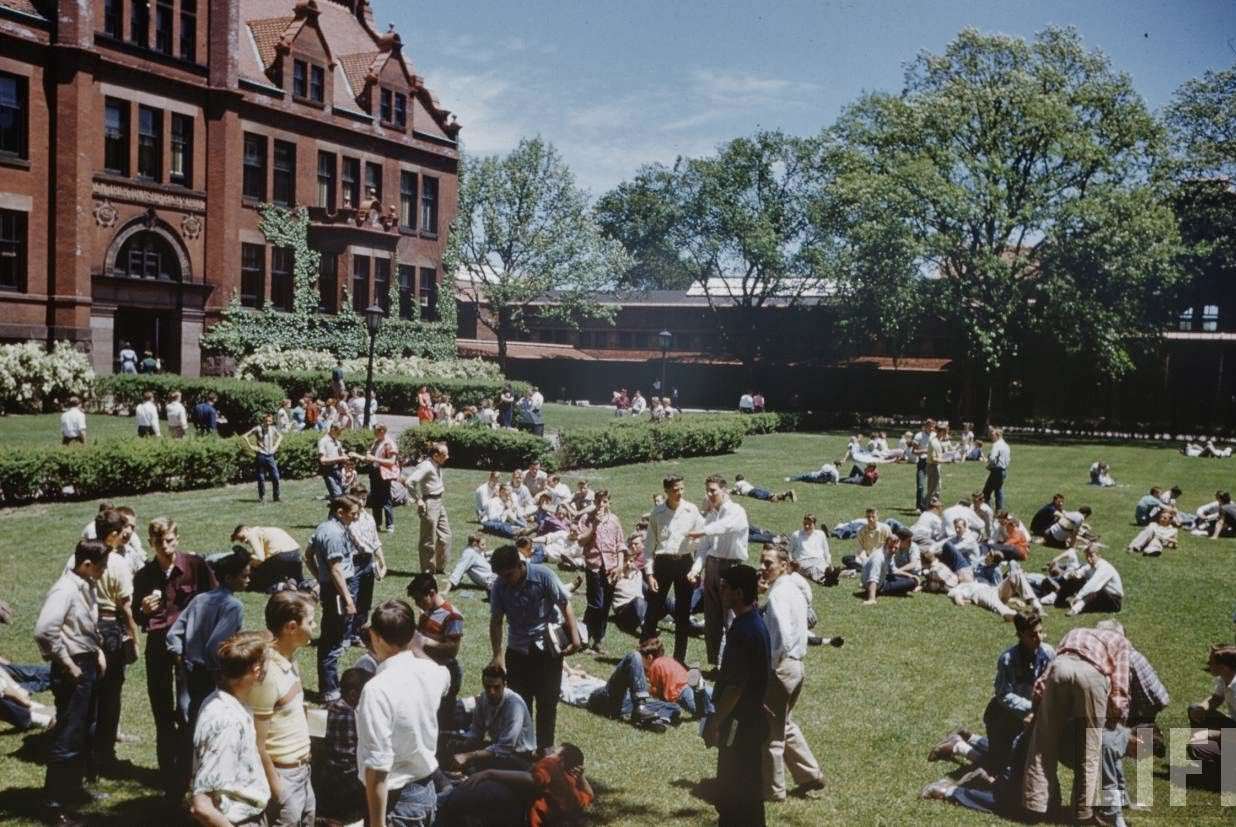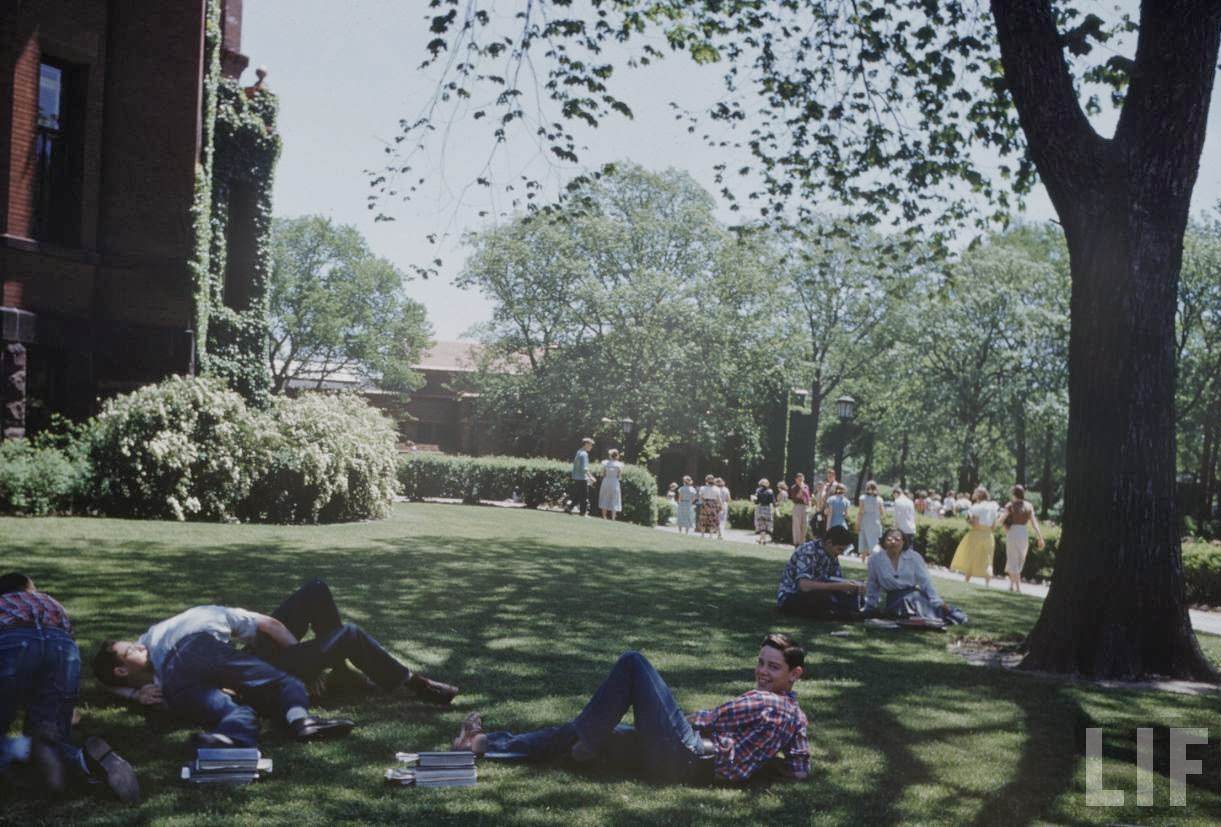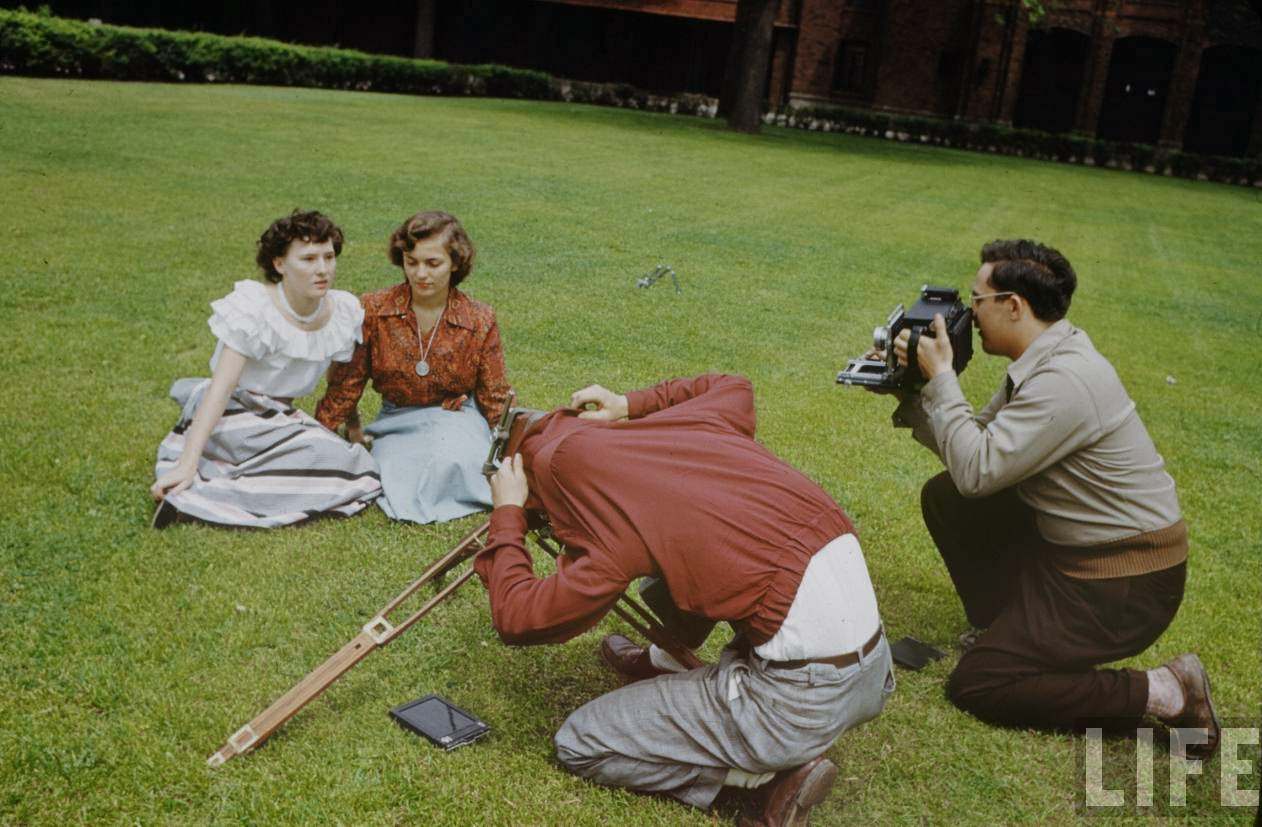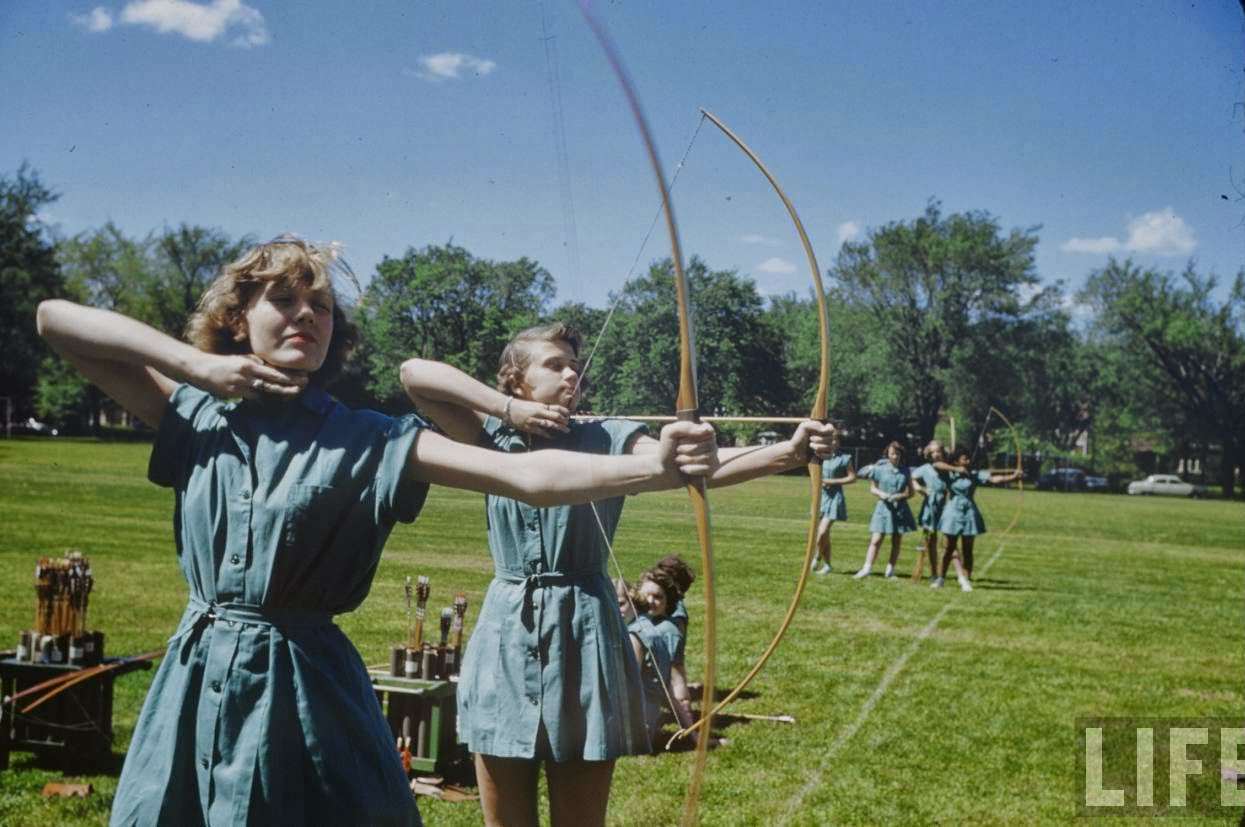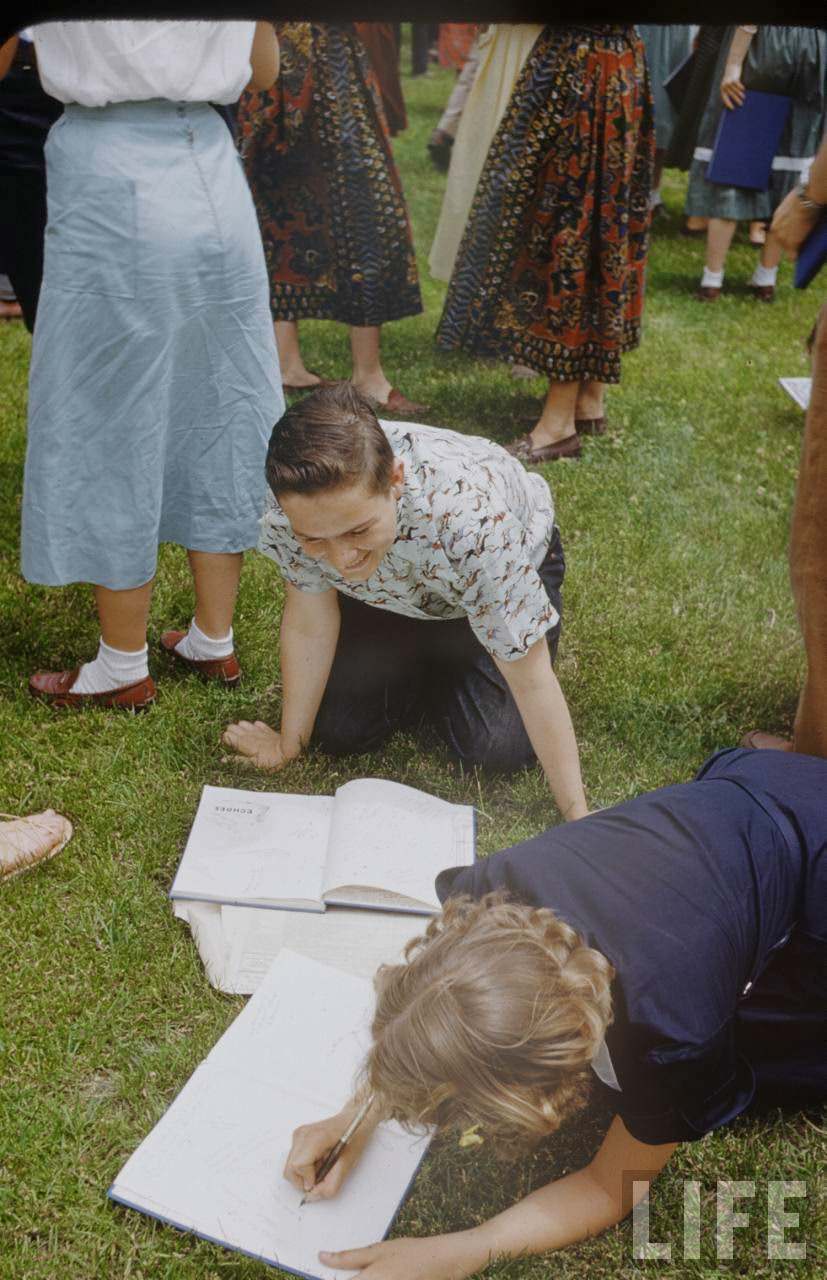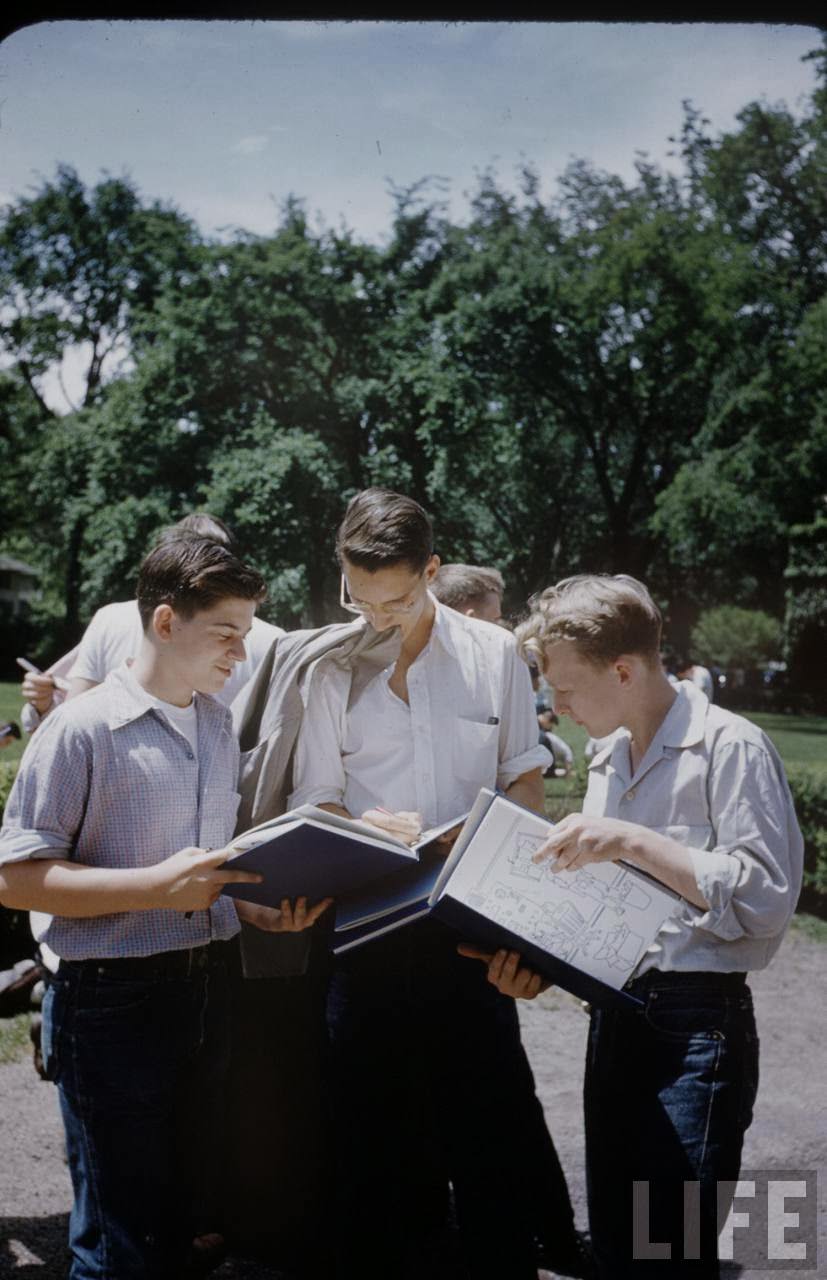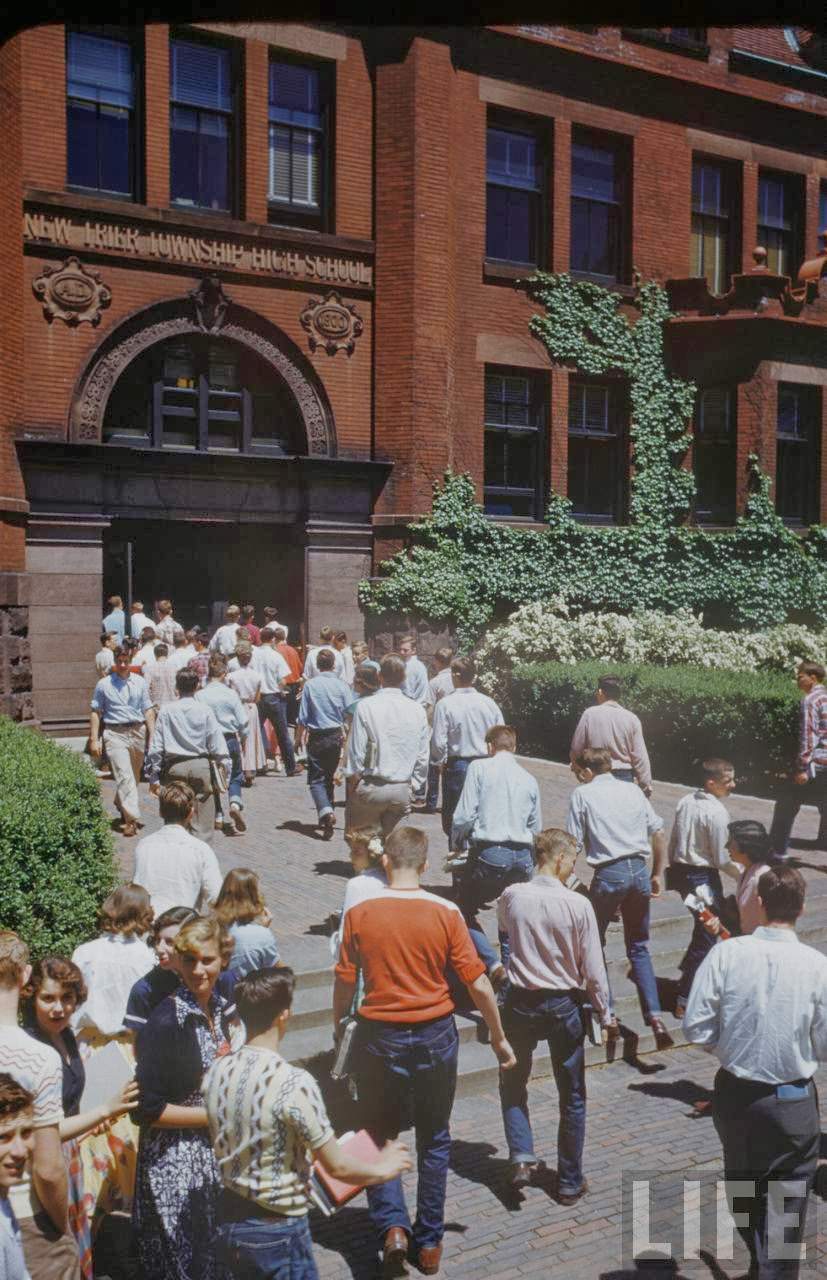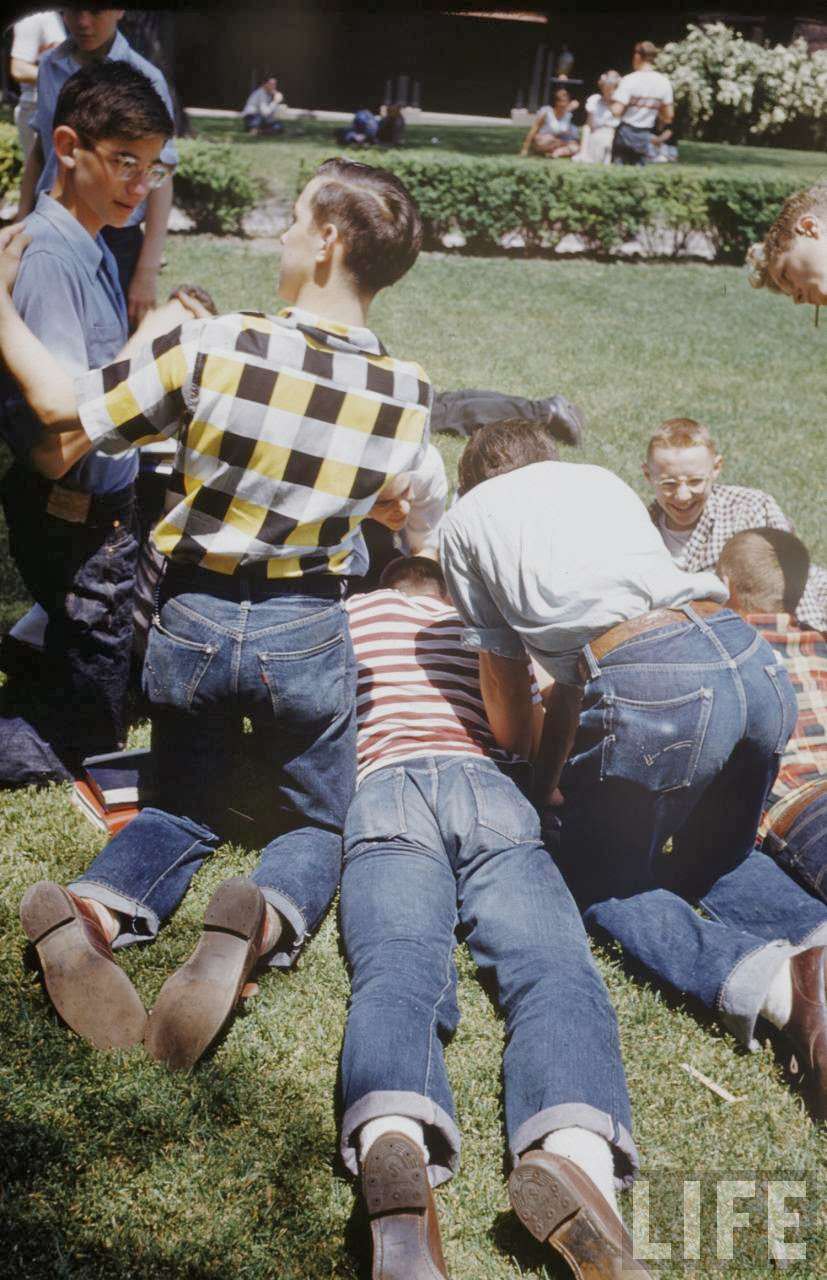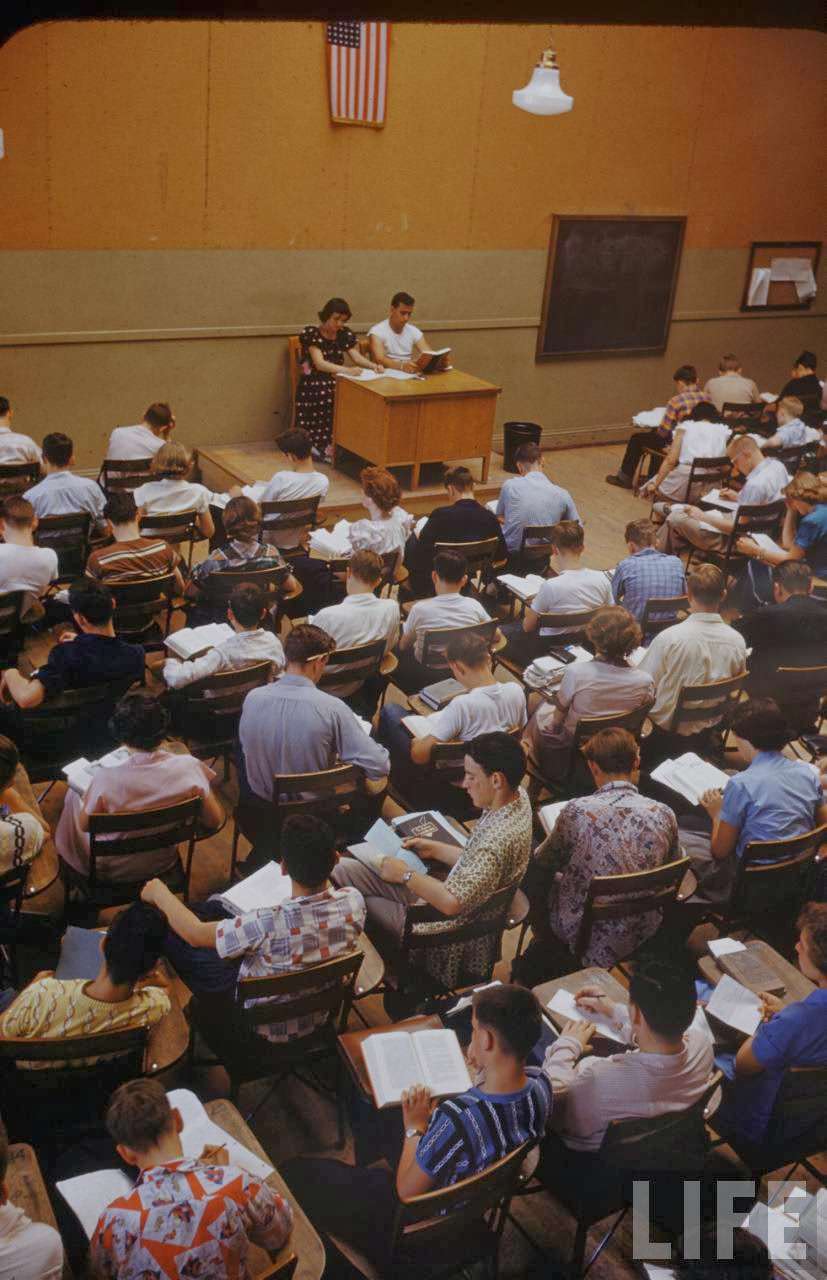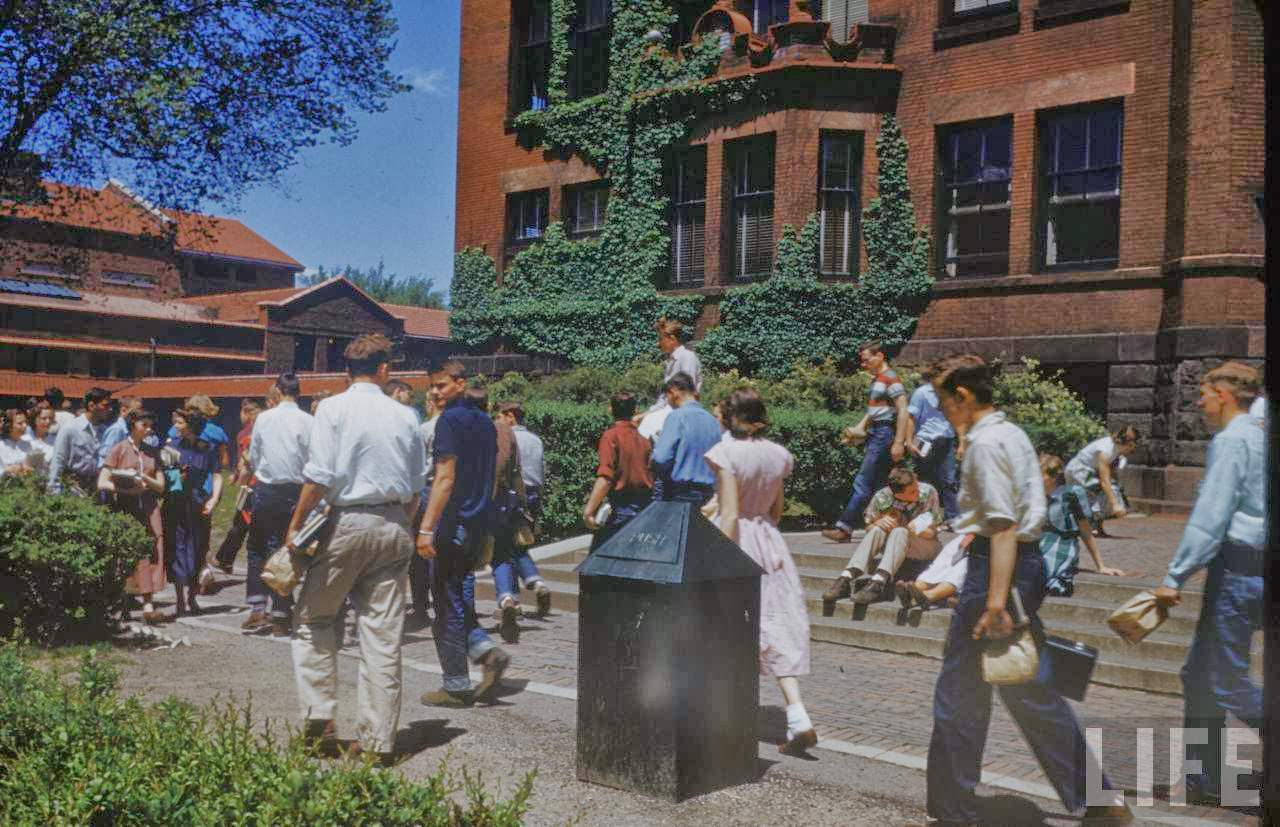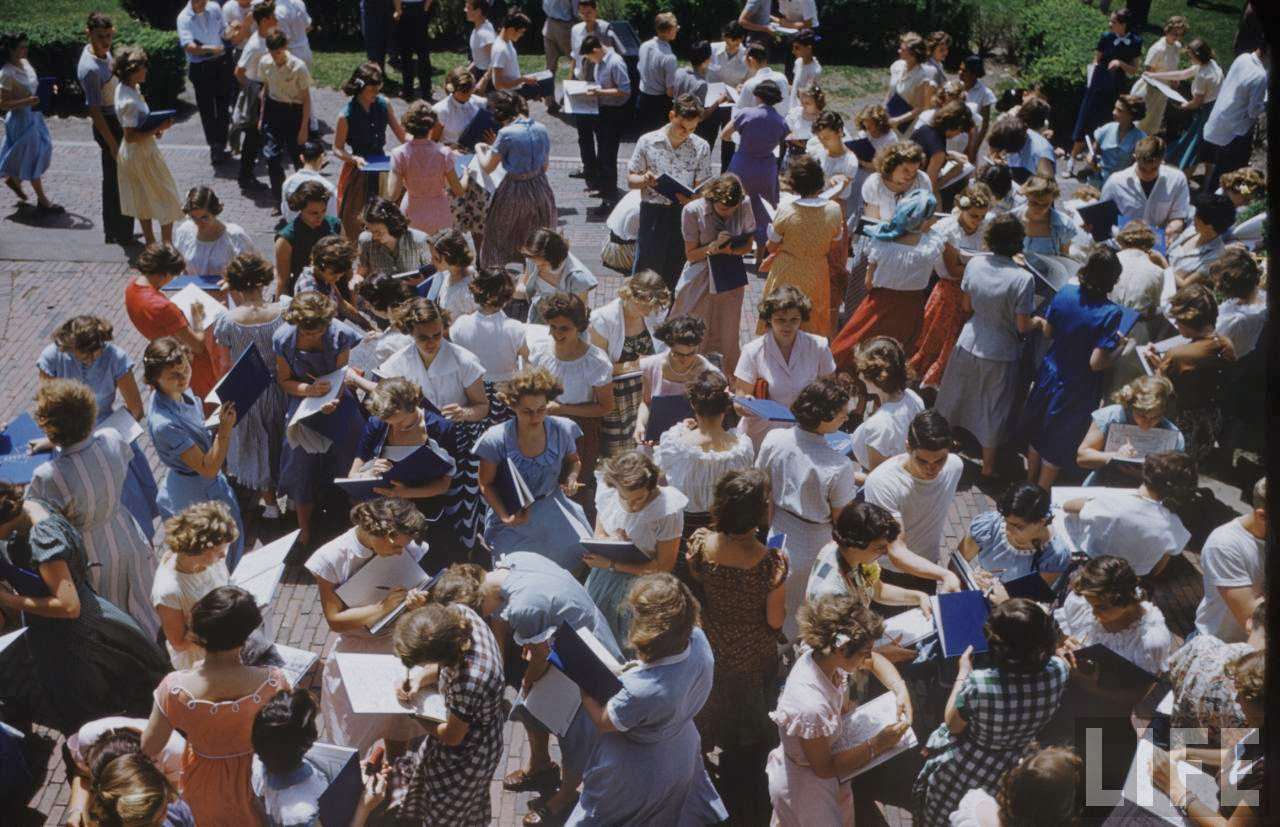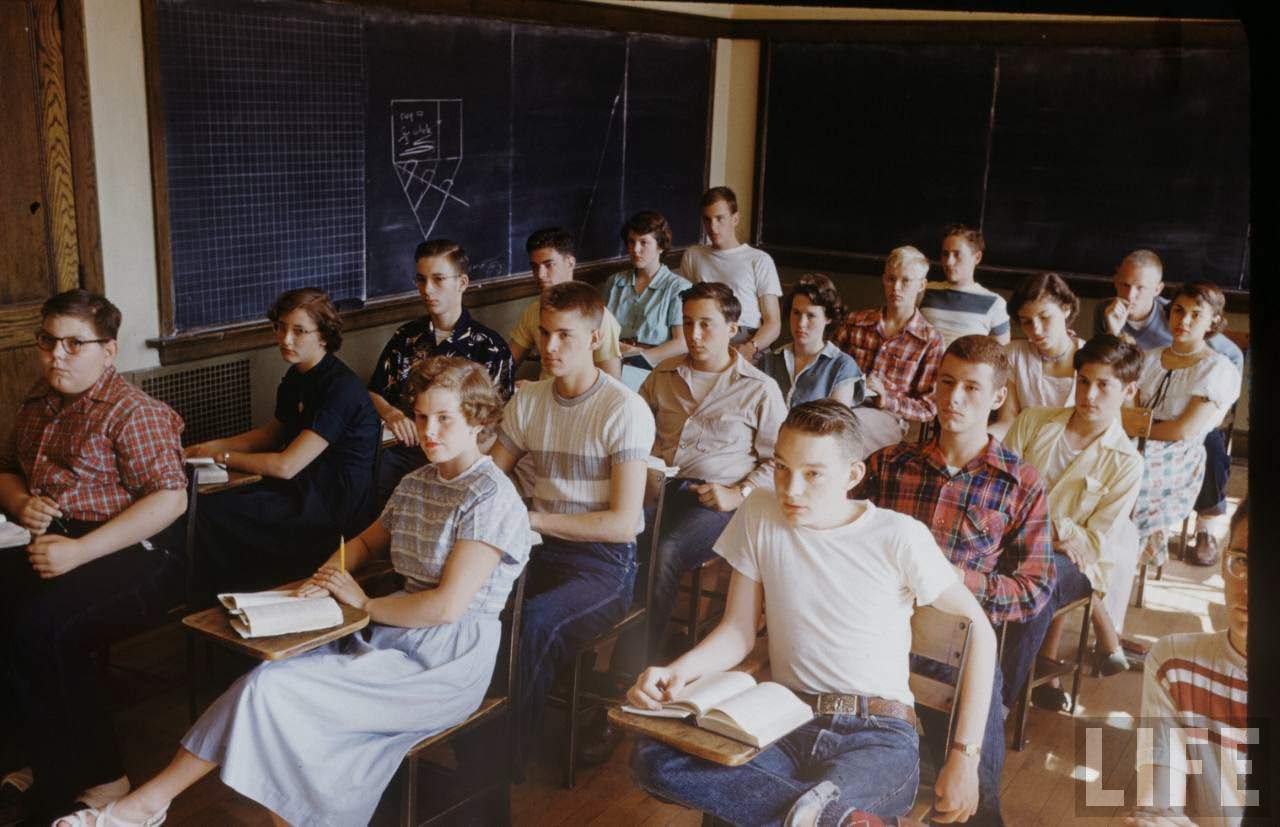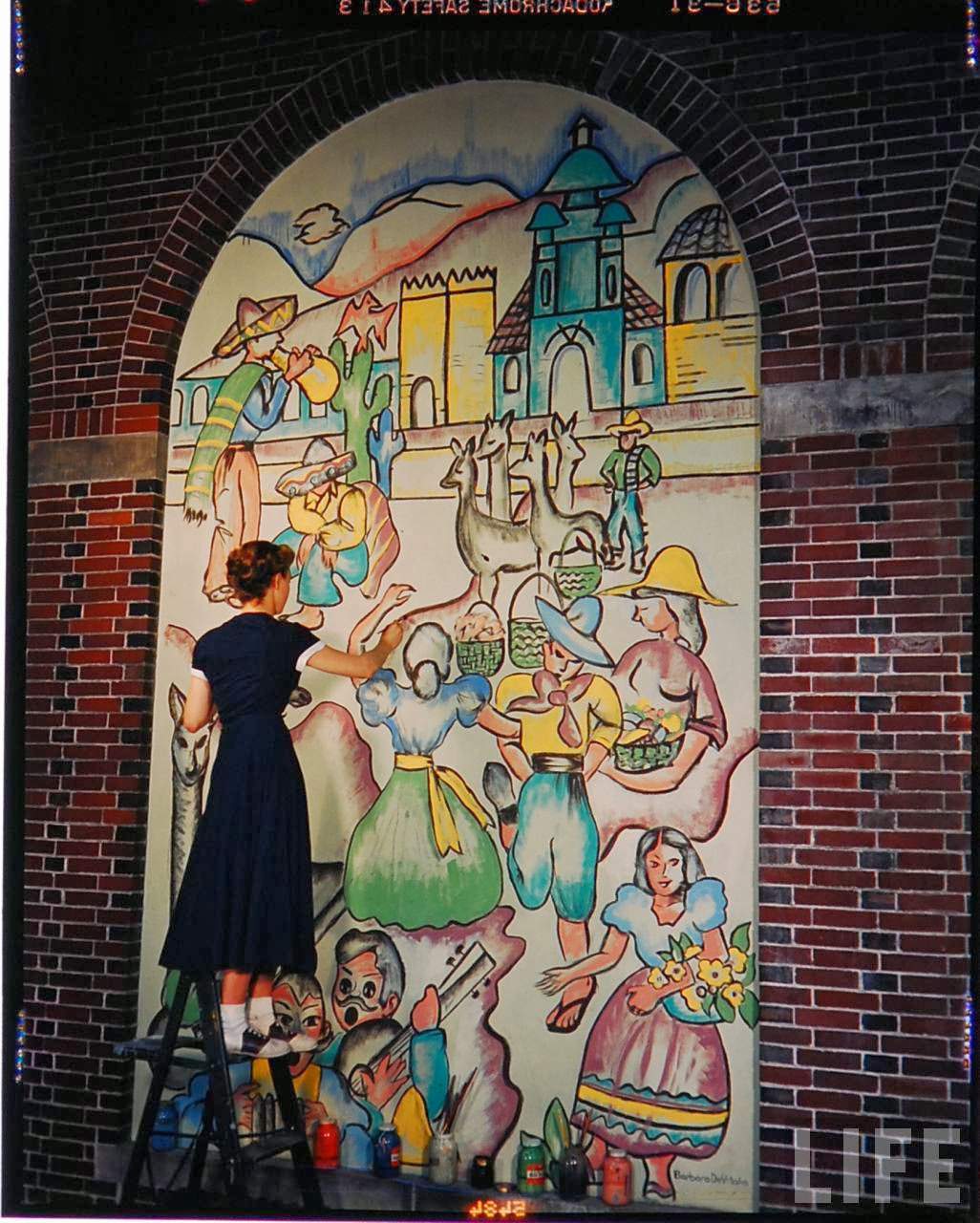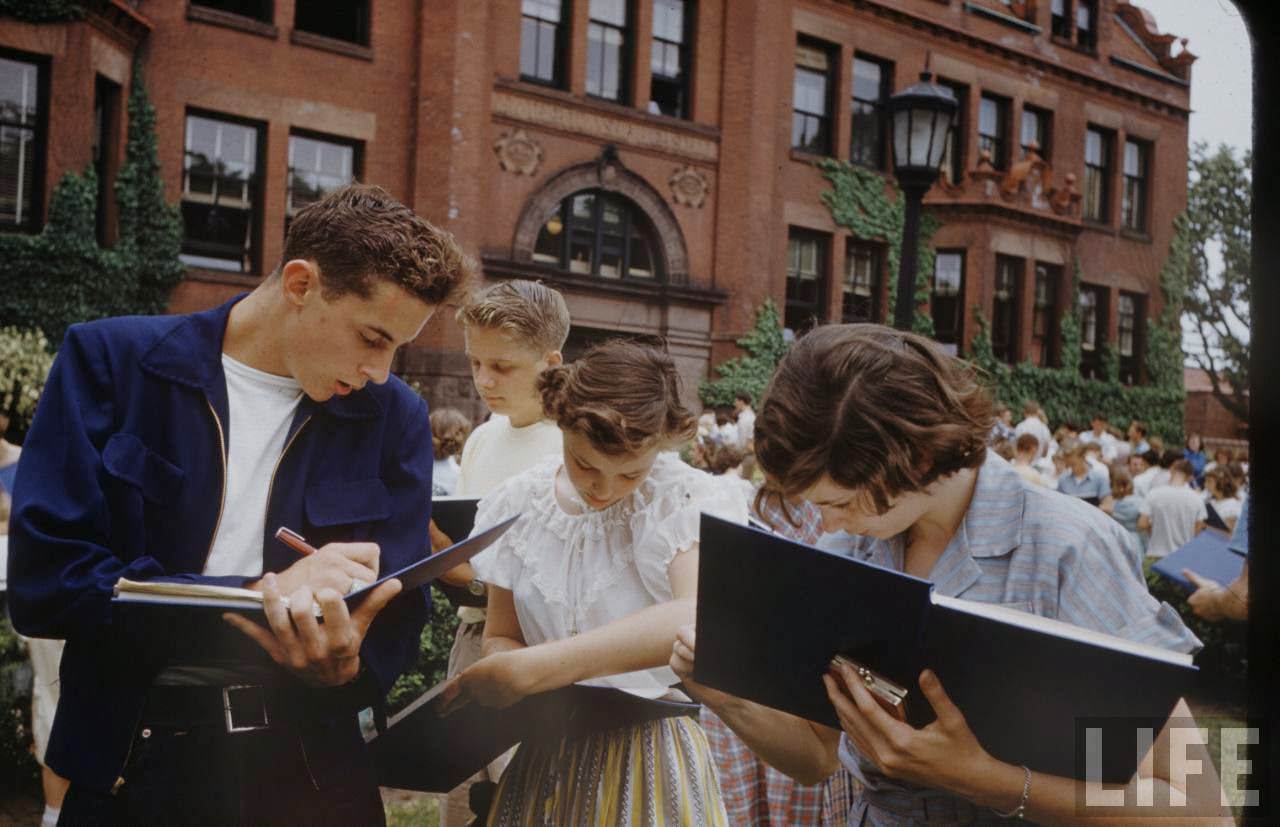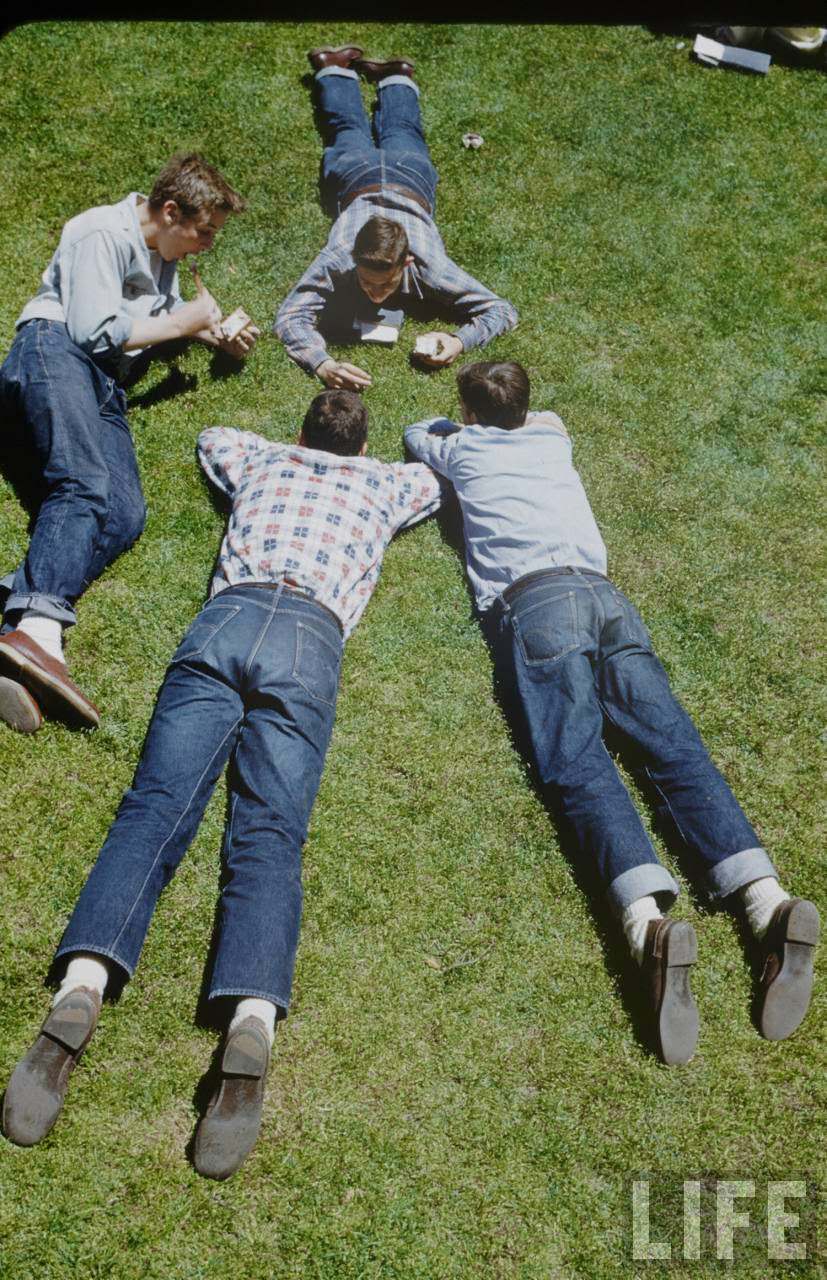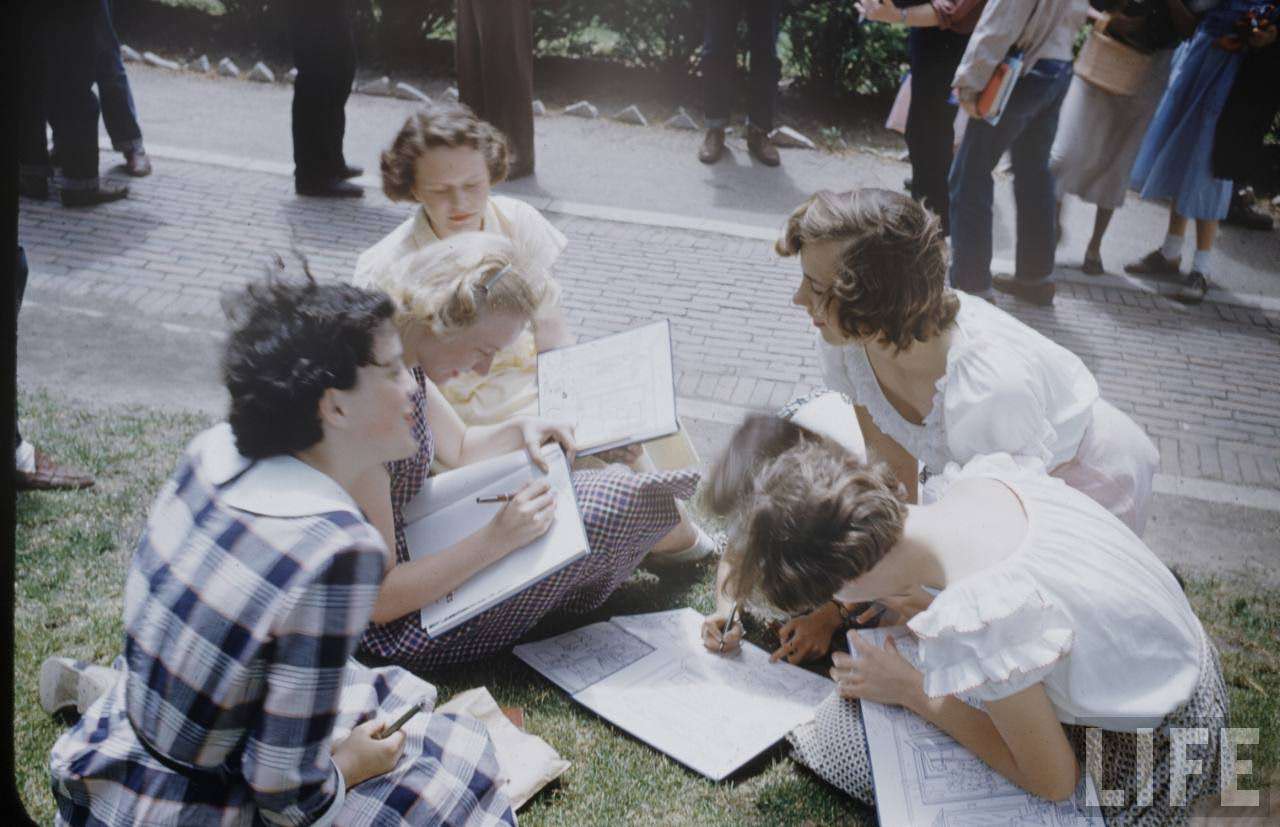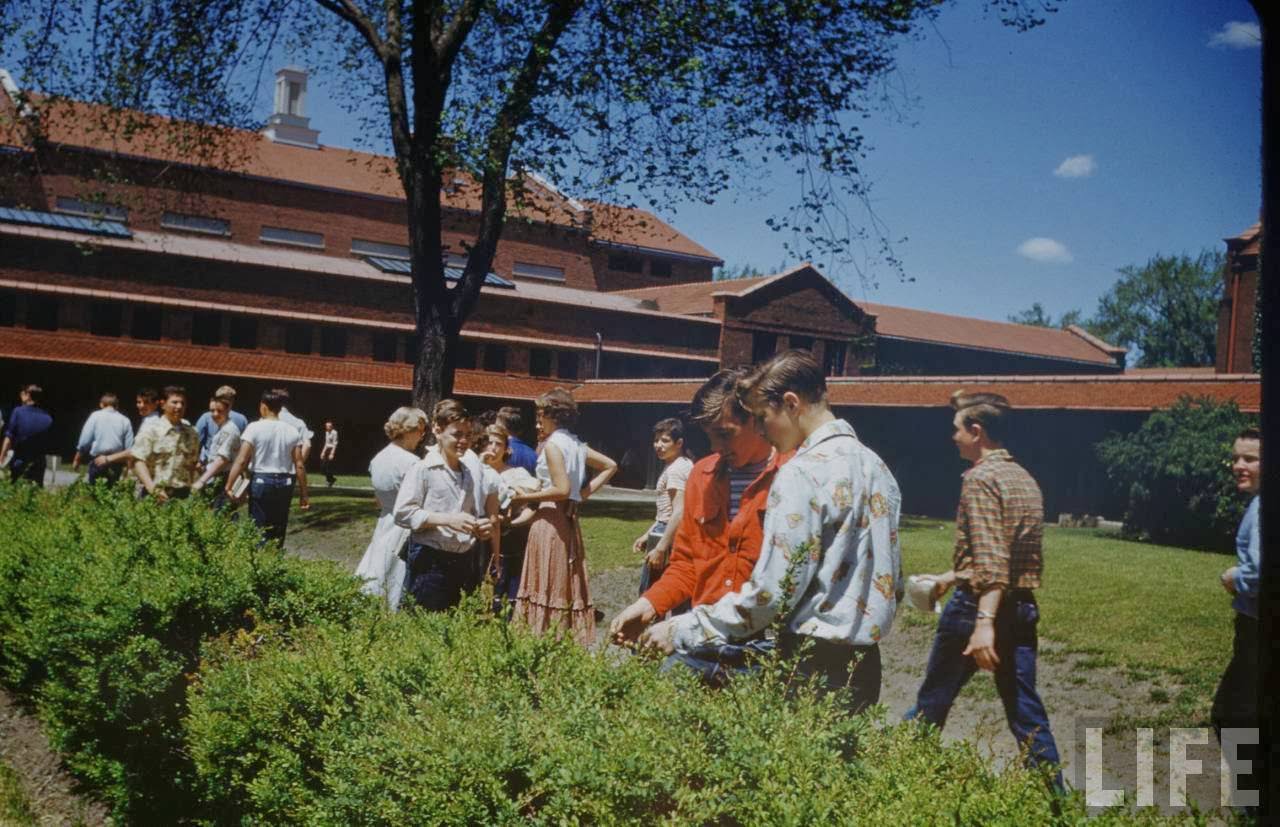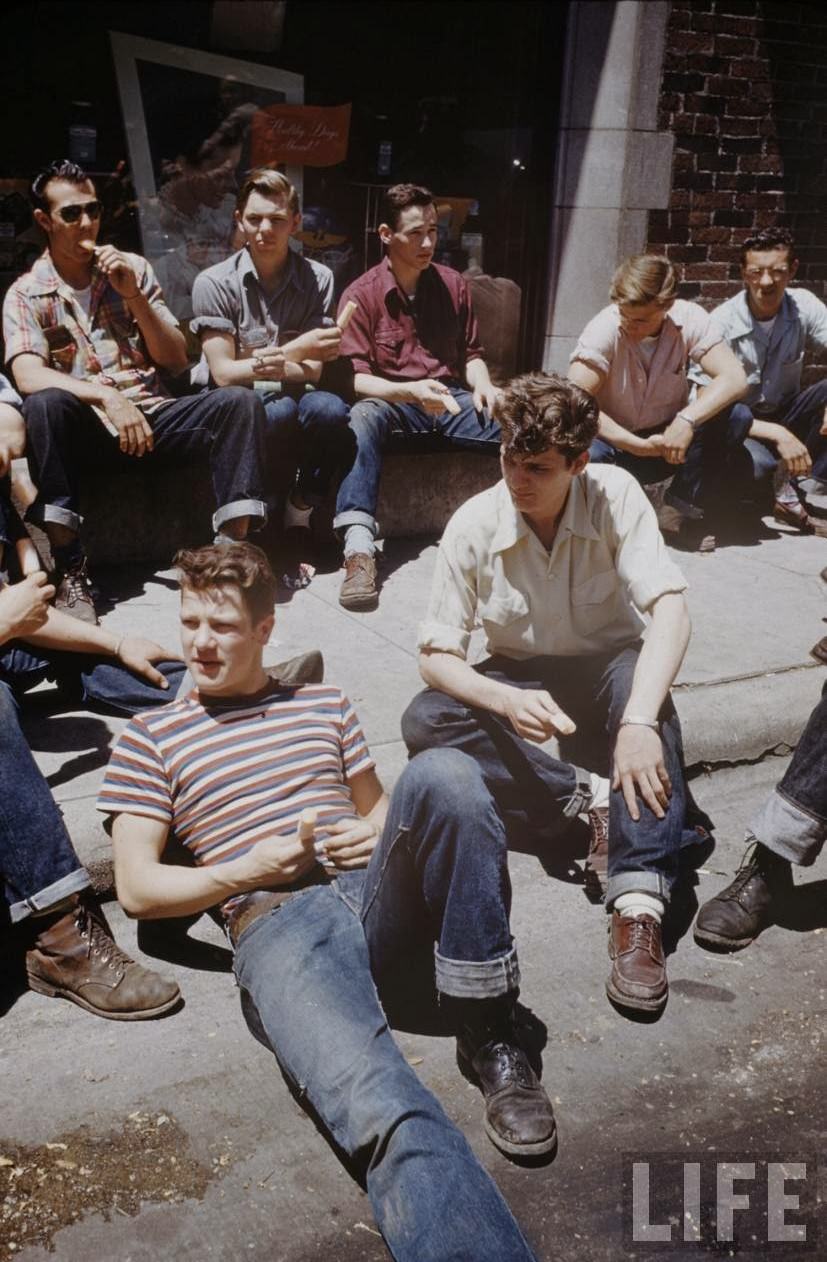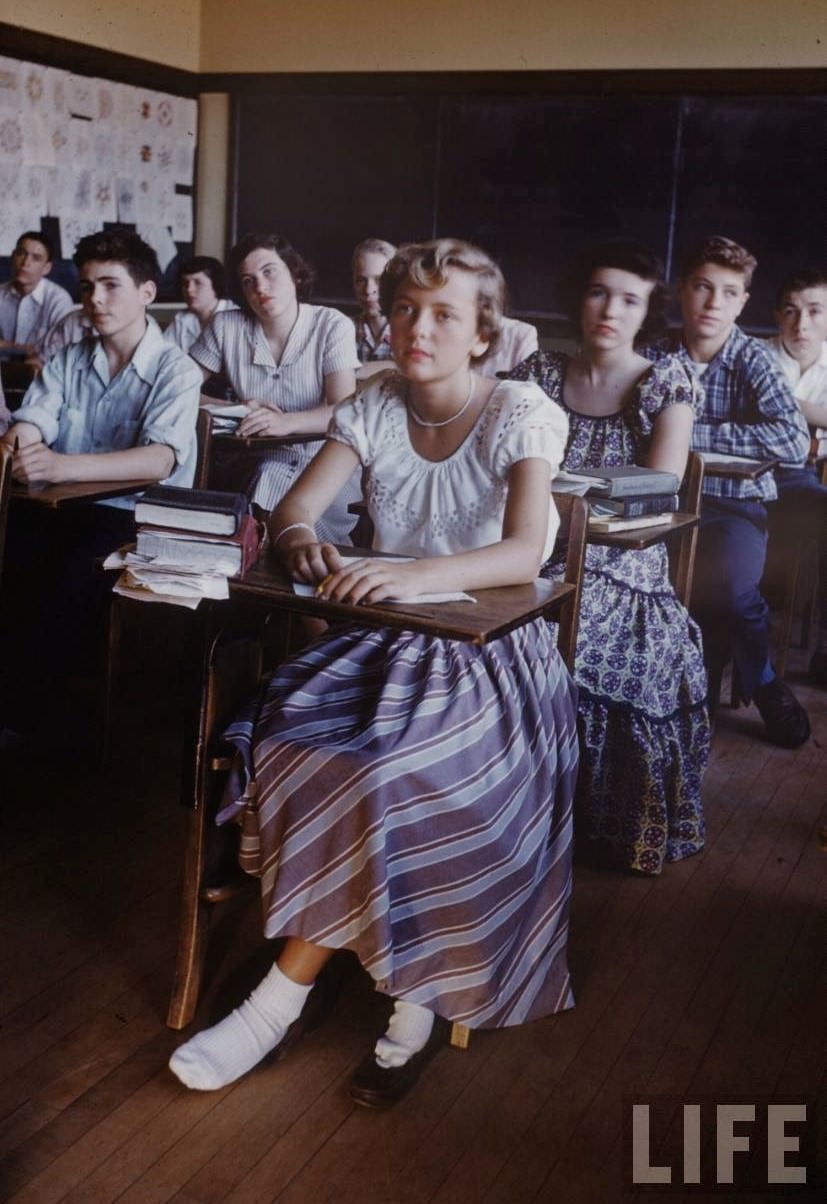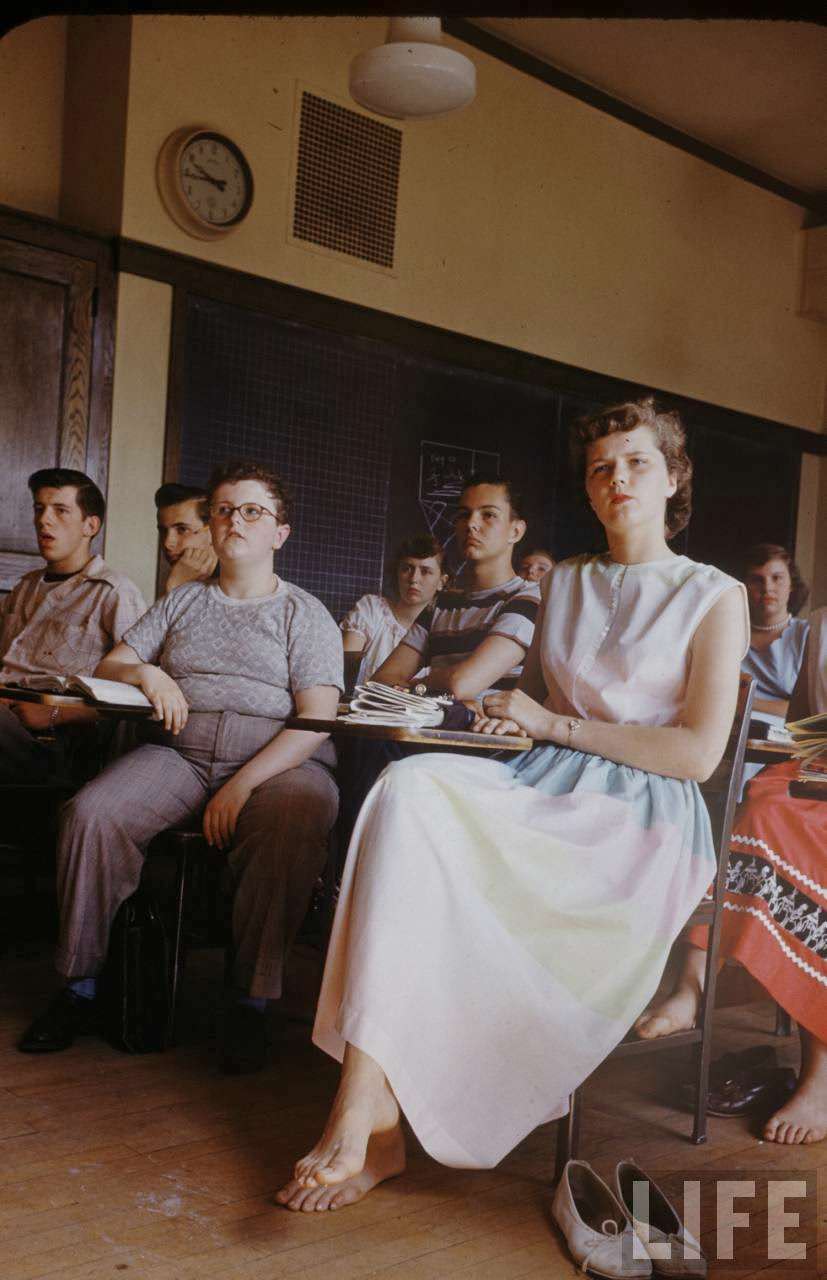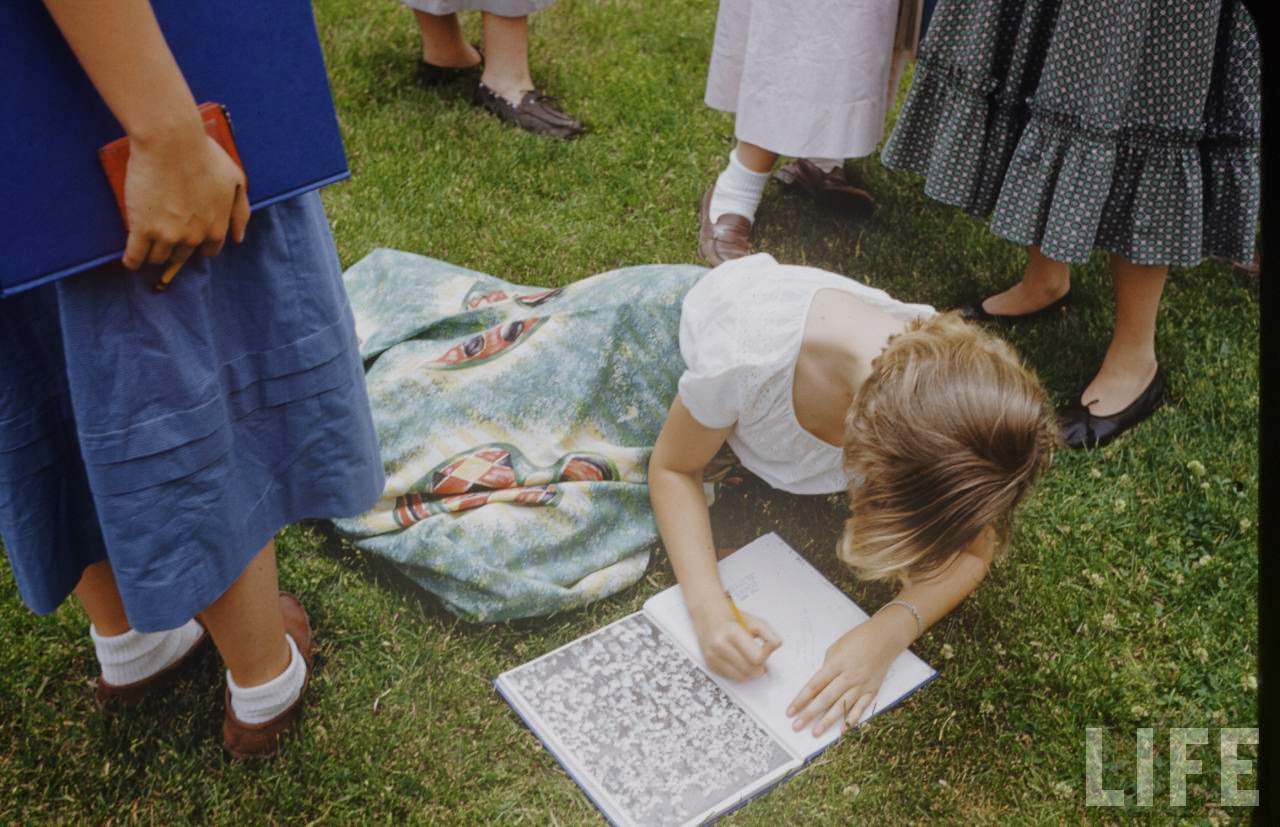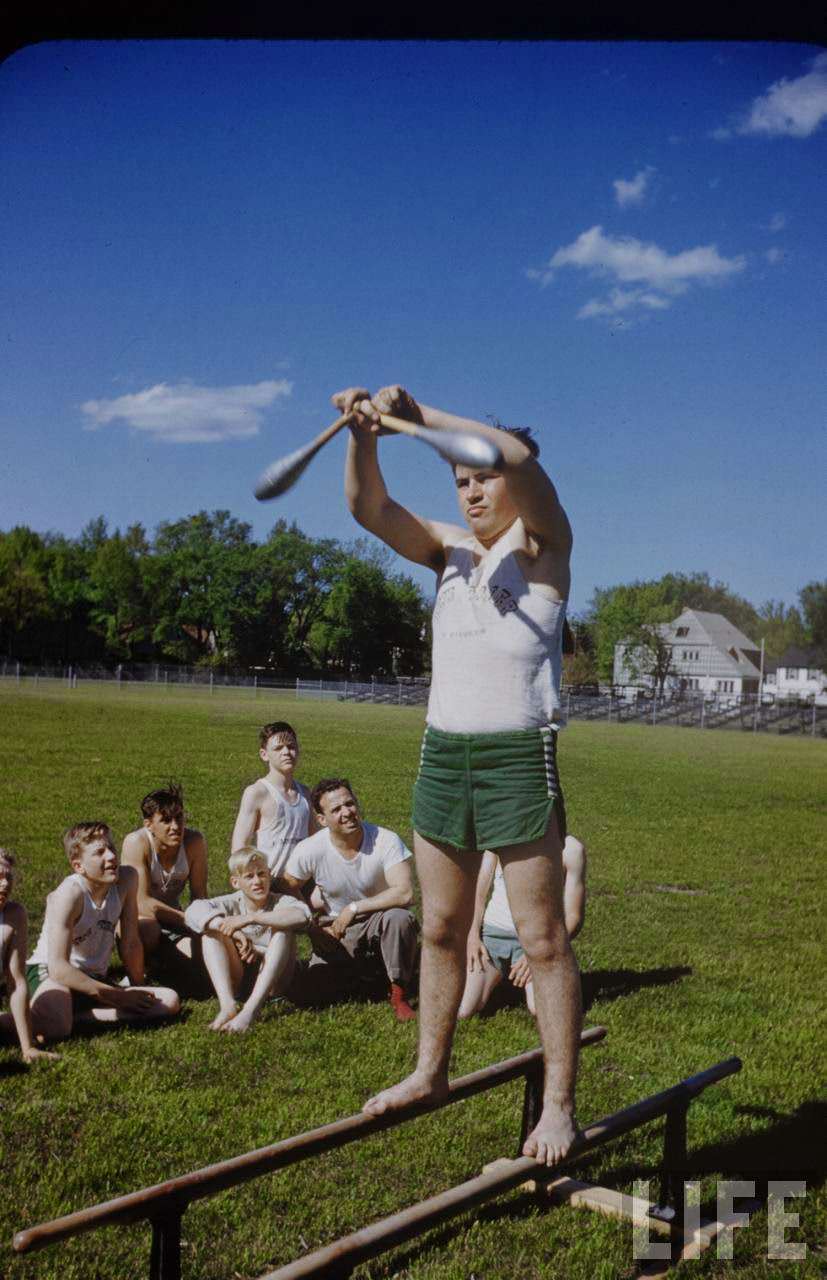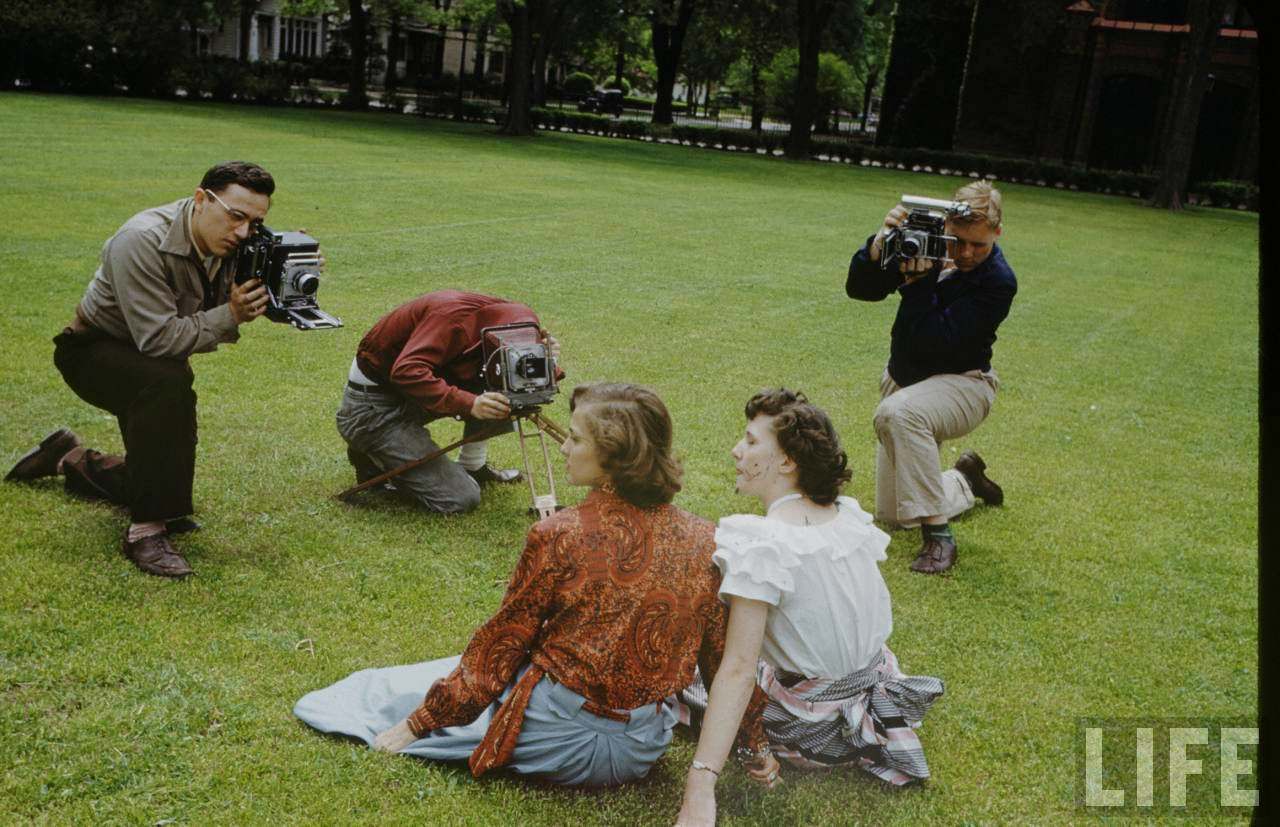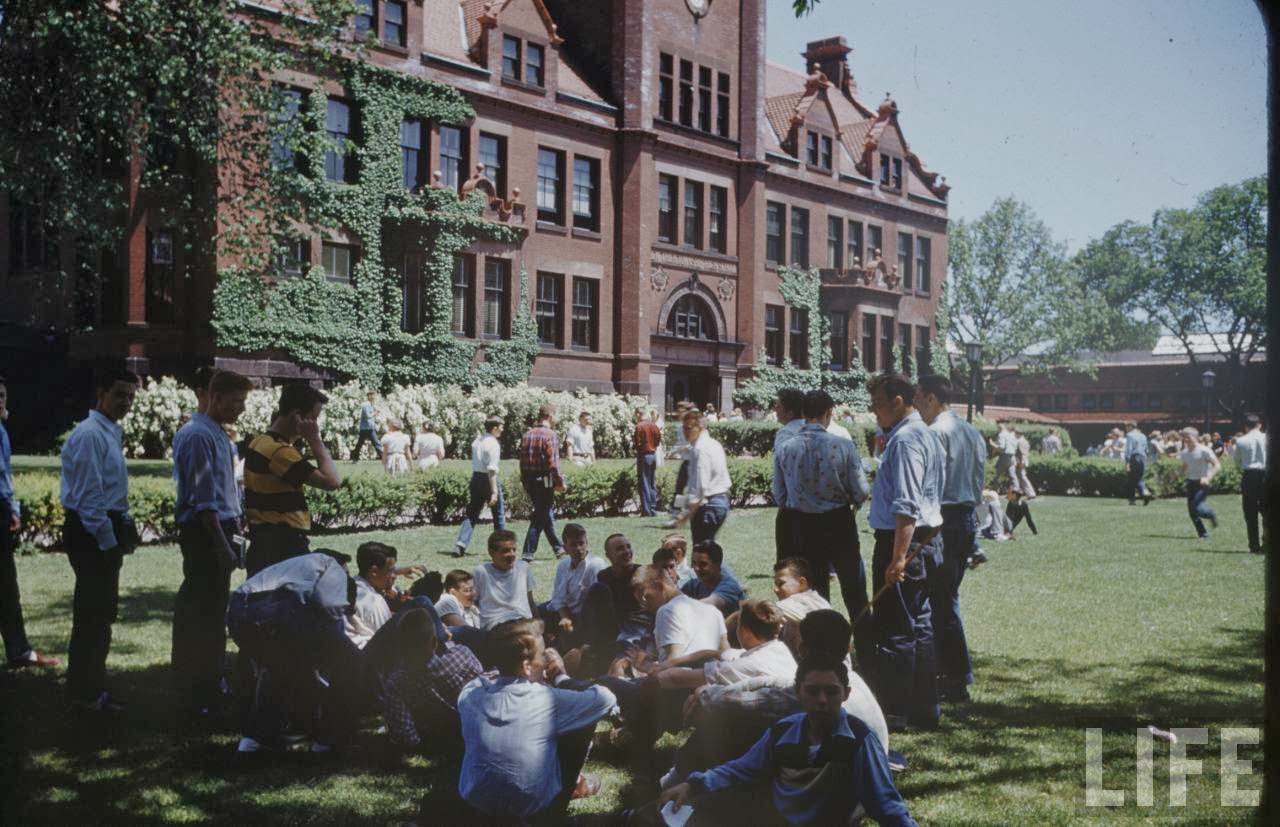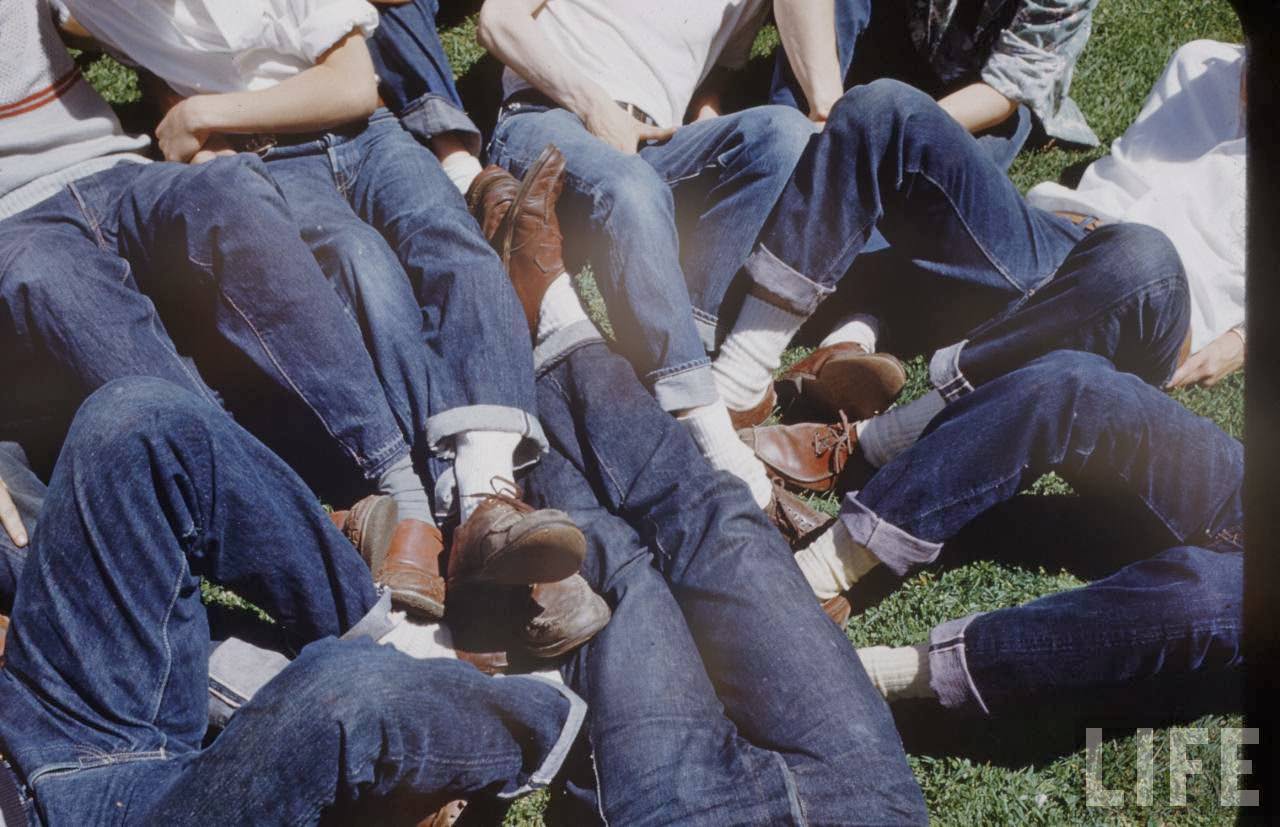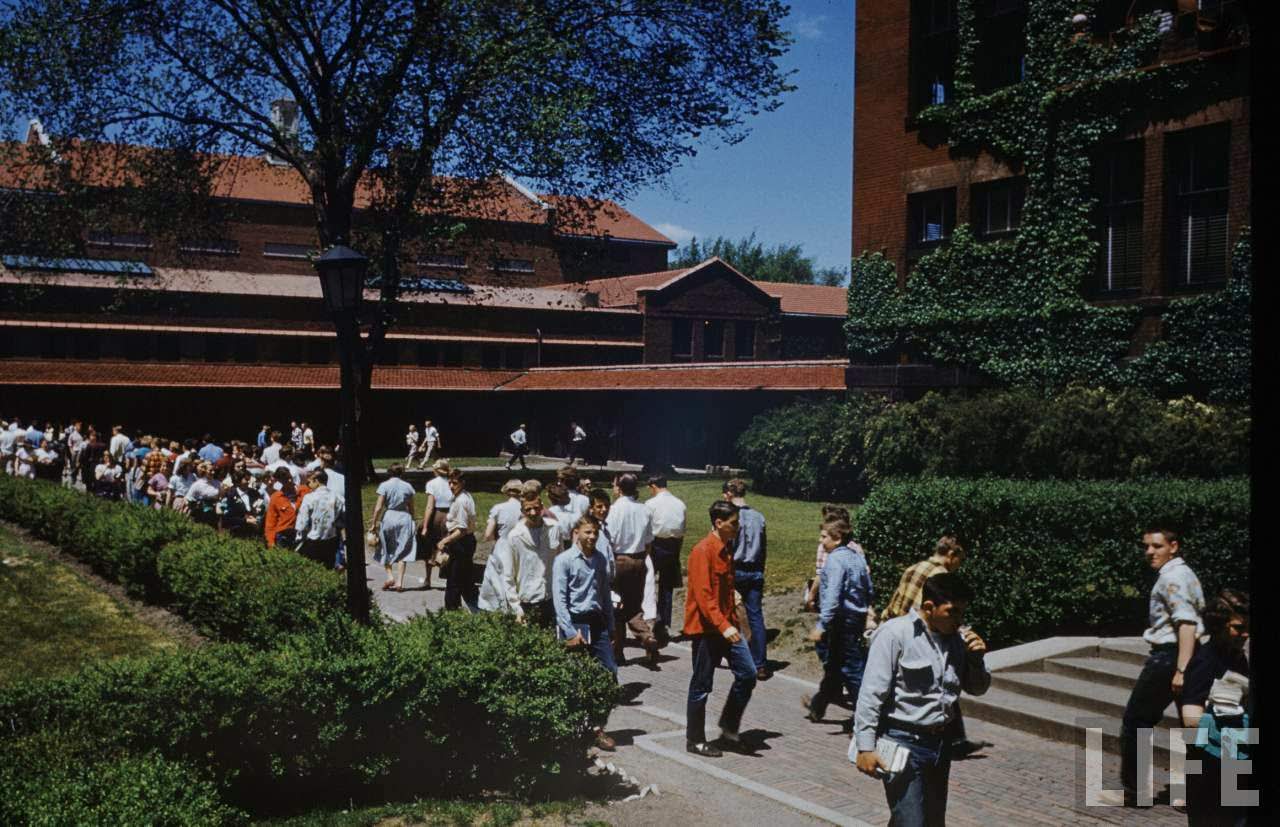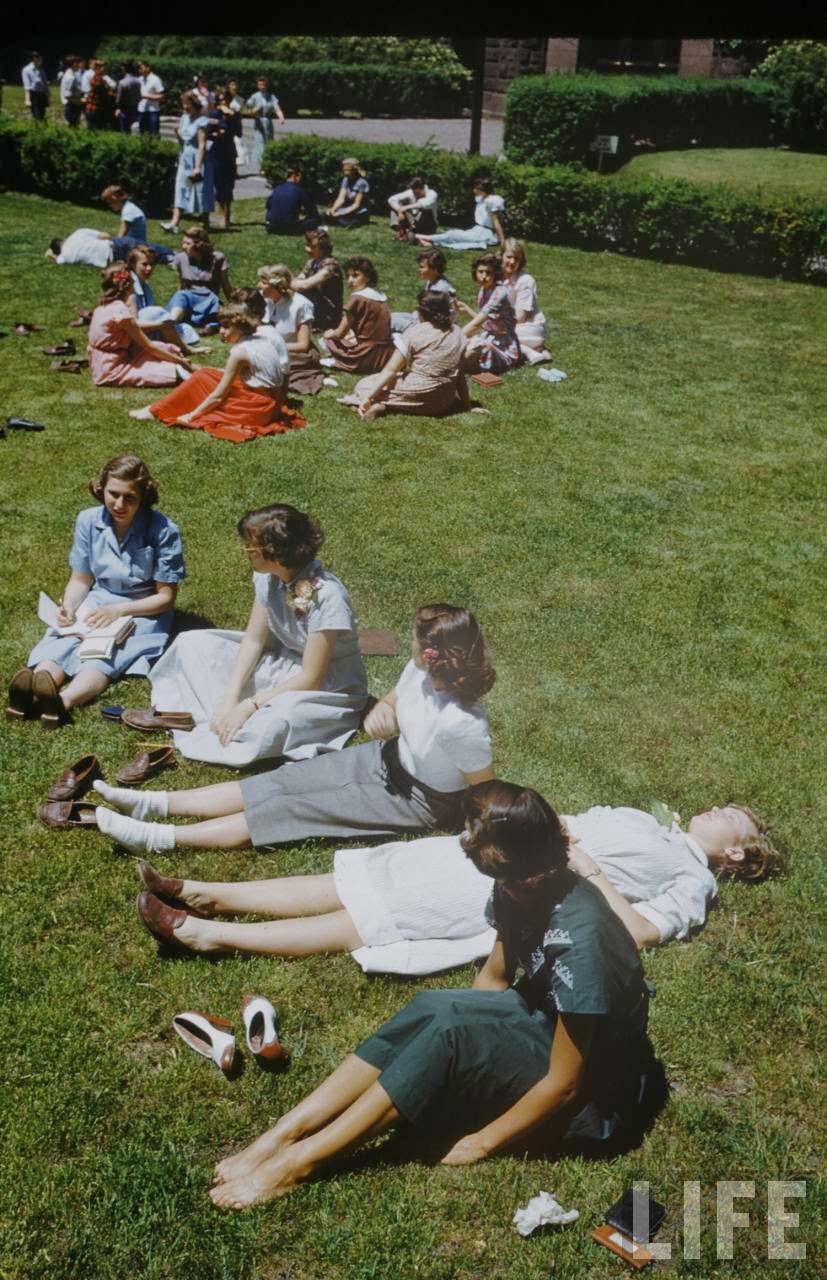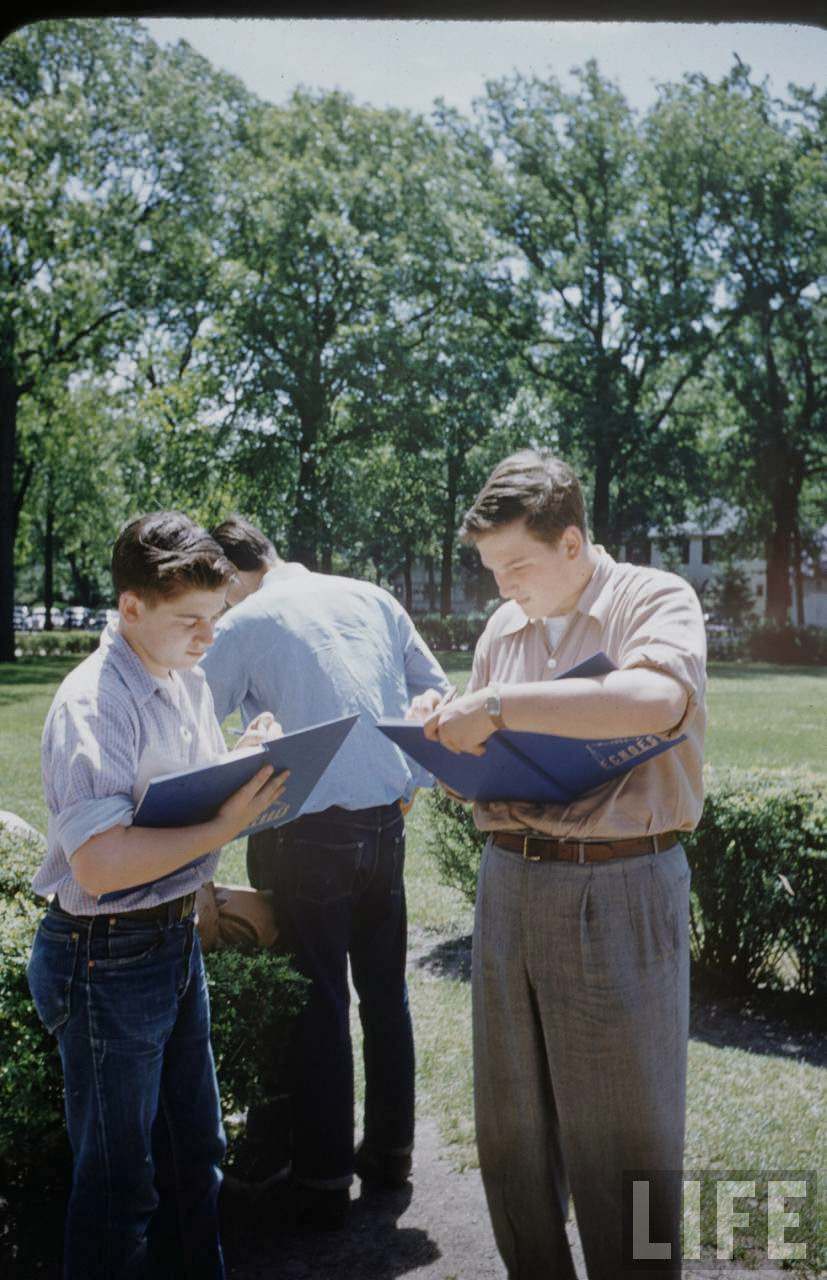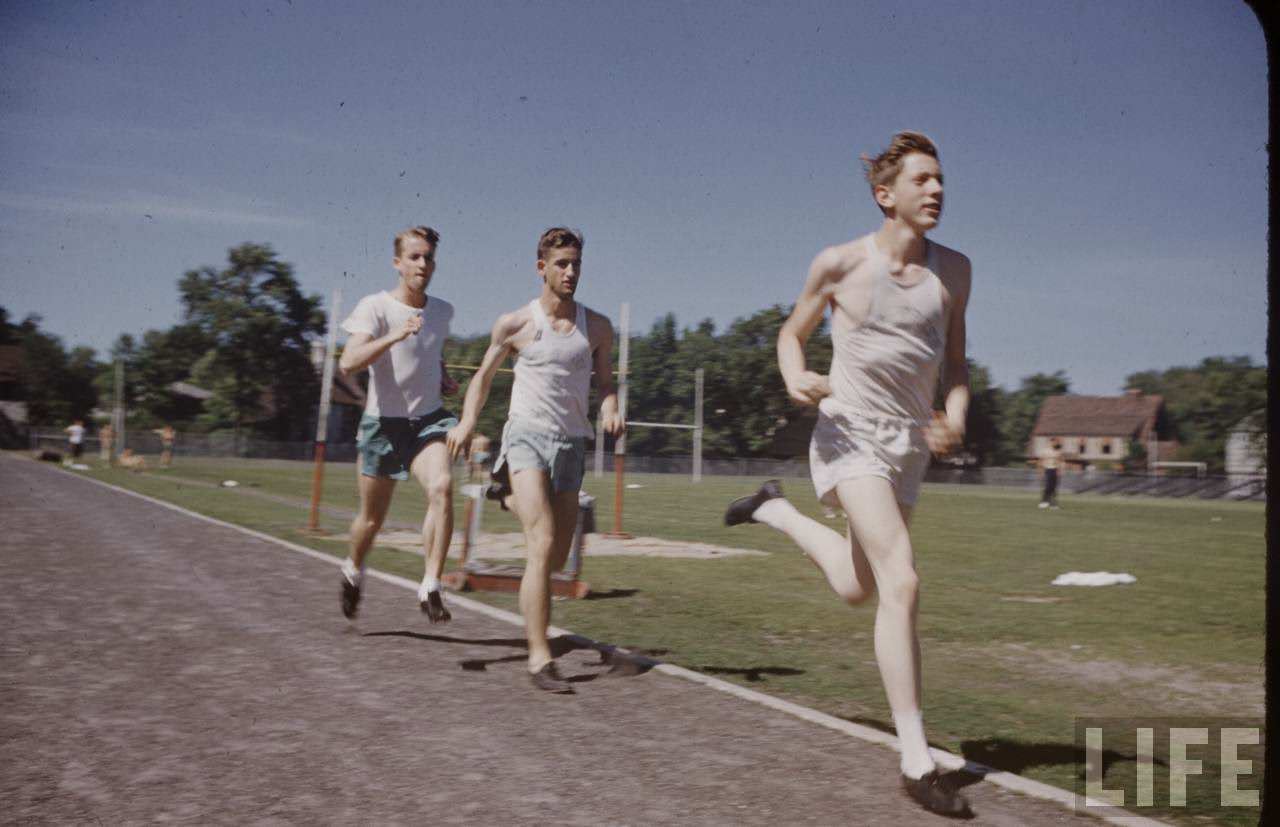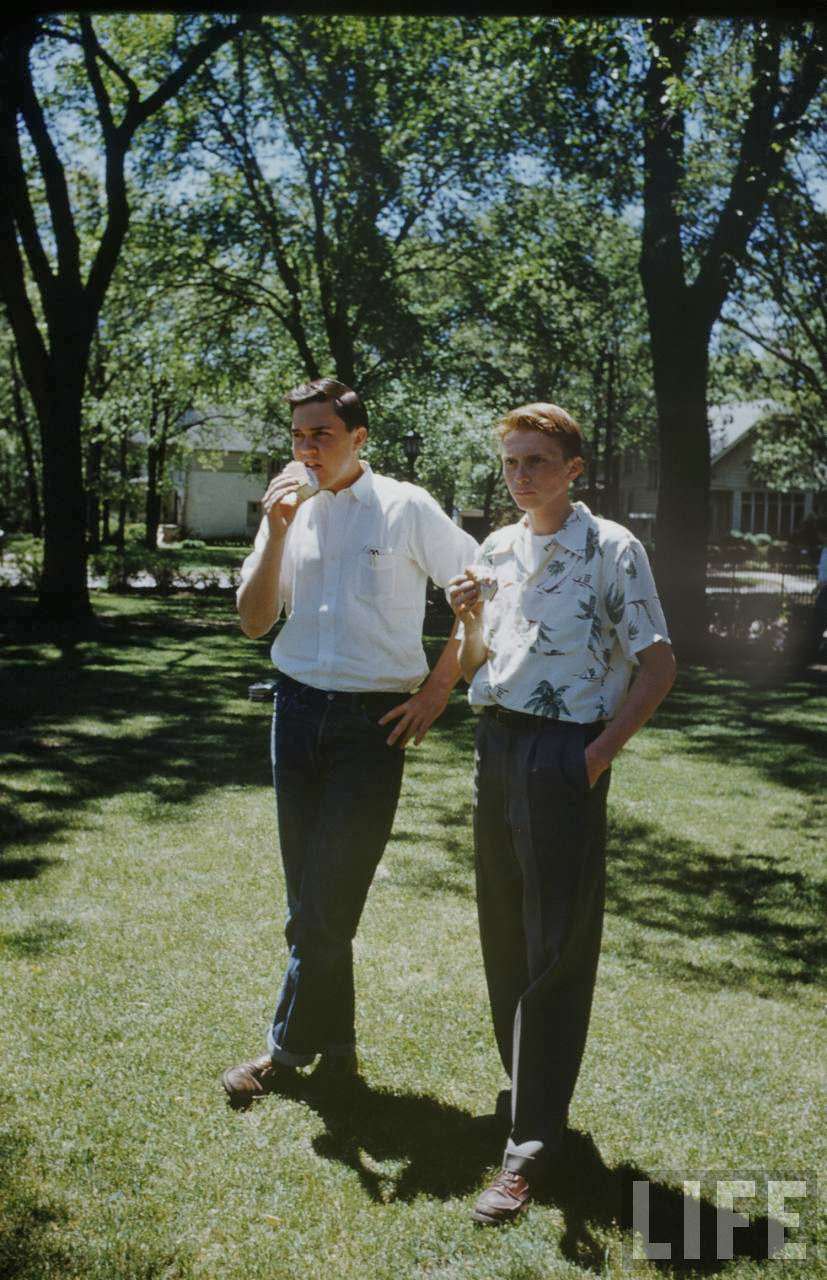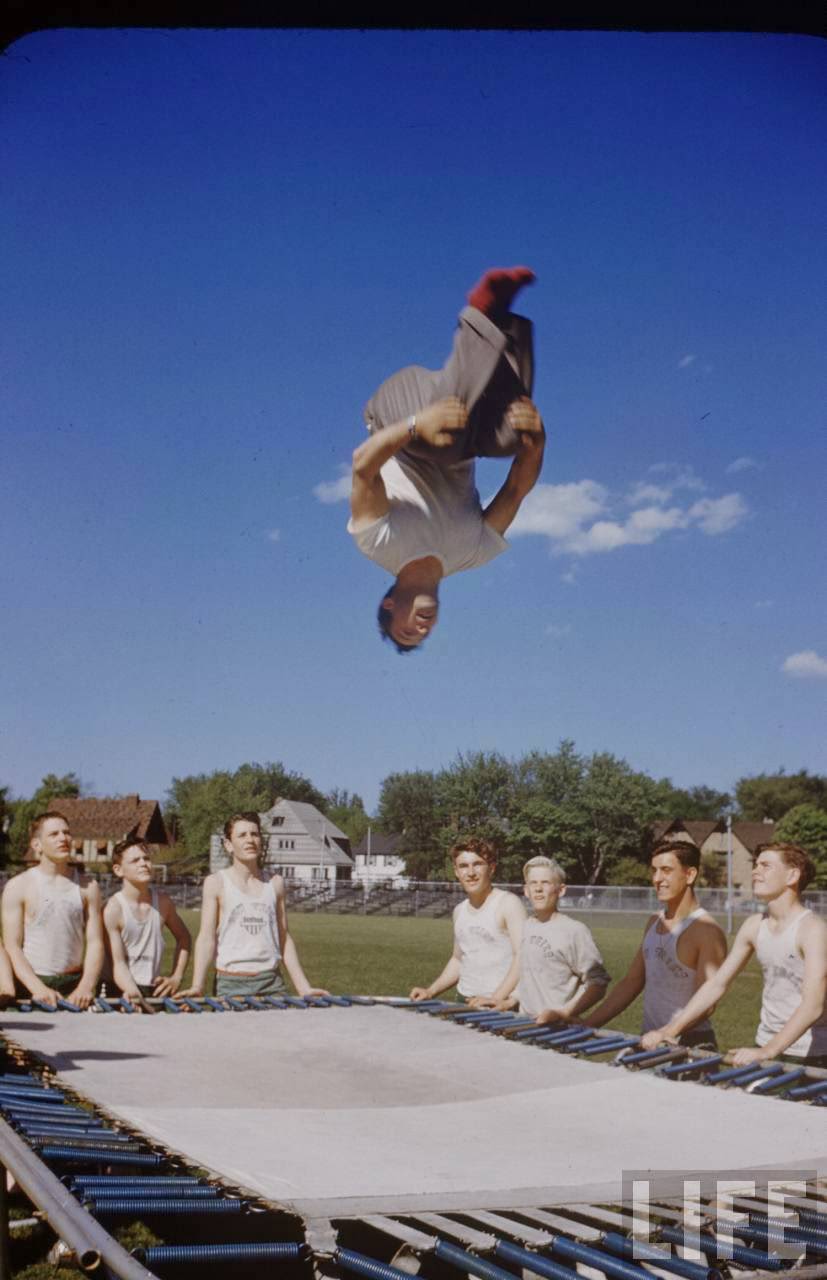In 1950, New Trier High School in Winnetka, Illinois, was a reflection of post-war American suburban life. The school day was a structured routine of academics, social activities, and distinct cultural norms, a scene captured by LIFE magazine photographer Alfred Eisenstaedt for a feature on the era’s high school experience.
The Academic Day
The curriculum for New Trier students in 1950 blended core academic subjects with courses designed for practical life skills, often separated by gender. Boys took classes in industrial arts, which included woodworking and metal shop, learning skills for manual trades. Girls, on the other hand, were enrolled in home economics courses. Here, they learned cooking, sewing, and other domestic skills in classrooms set up to look like home kitchens and living rooms.
Alongside these practical courses, students took a traditional roster of academic subjects. English, history, mathematics, and science formed the core of their education. The classrooms were formal, with students seated in rows of individual desks facing a teacher and a chalkboard.
Read more
Social Life and School Culture
The social life of students was centered around school-sponsored events and a clear code of conduct. School dances were a major part of the social calendar. These events took place in the school gymnasium, where students danced to popular music under the supervision of teachers acting as chaperones. A strict dress code was enforced; boys wore suits or sport coats with ties, and girls wore dresses or skirts and blouses.
In the hallways and cafeteria, social hierarchies were part of daily life. Students congregated in their distinct social groups. The fashion of the time was neat and conservative. Male students wore slacks with button-down shirts or sweaters. Female students wore pleated or A-line skirts that fell below the knee, paired with blouses or twin-set sweaters. Saddle shoes were a popular footwear choice for both boys and girls.
Extracurricular Activities
After the final bell, many students participated in a wide range of extracurricular activities. The school had numerous sports teams, and athletics were a central part of student life and school spirit. The cheerleading squad, dressed in school uniforms, practiced their routines and led crowds at football games.
Beyond sports, clubs dedicated to various interests were common. The drama club rehearsed and staged plays for the school community. Other groups, such as the student council, provided opportunities for students to engage in school governance. In the evenings, students often gathered at local diners or soda shops, which served as informal social hubs where they could relax and spend time with friends outside the structured environment of the school.


